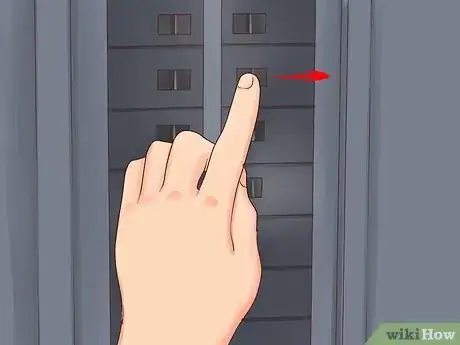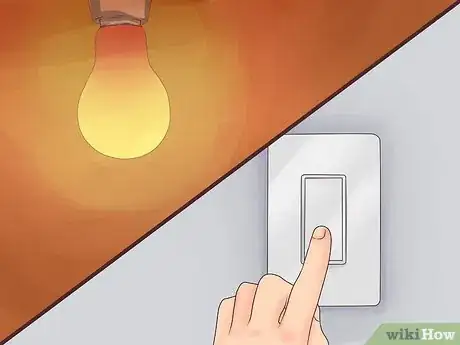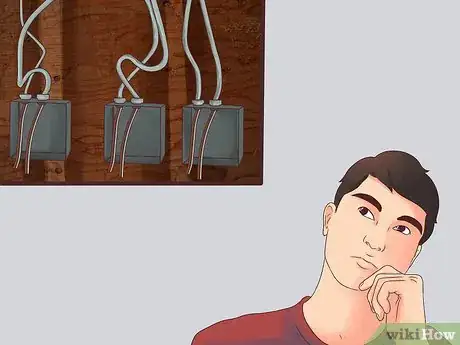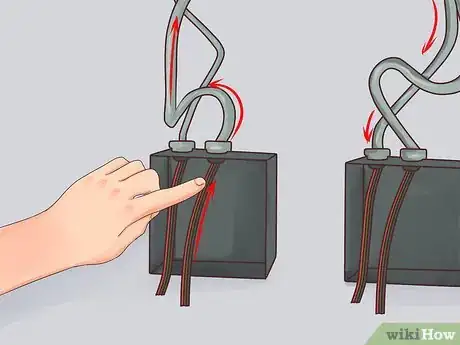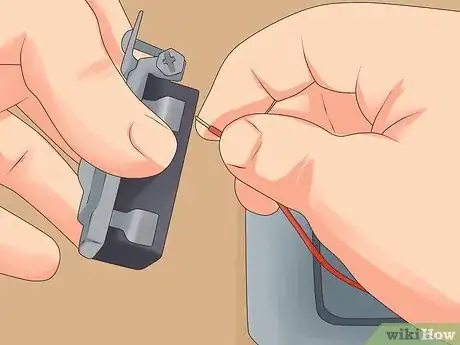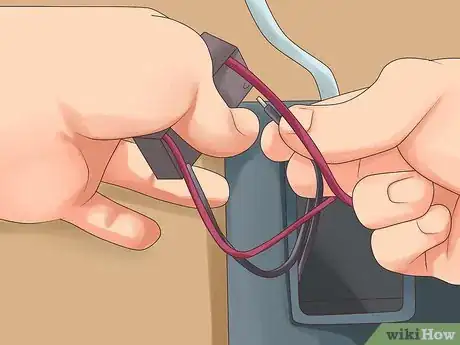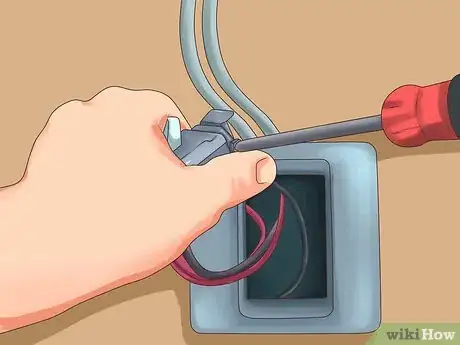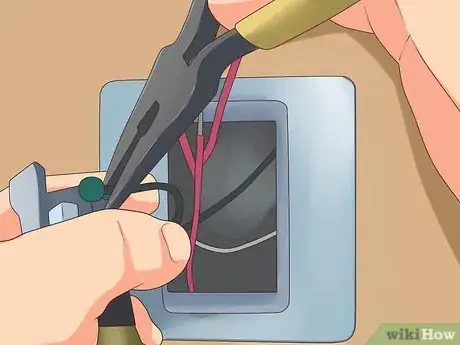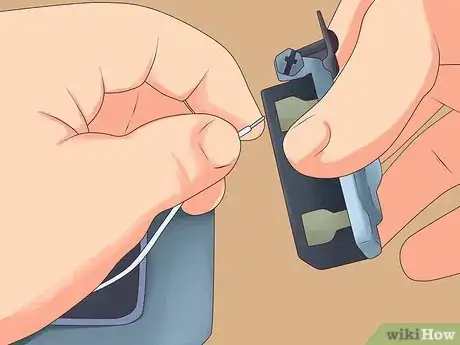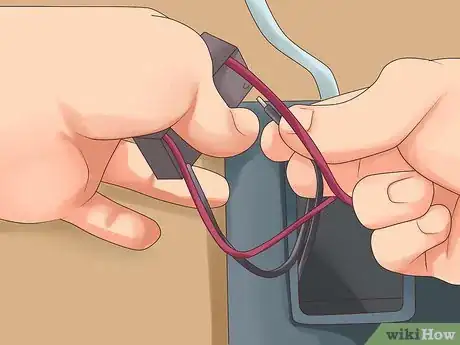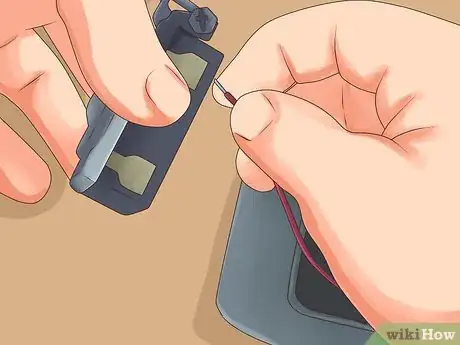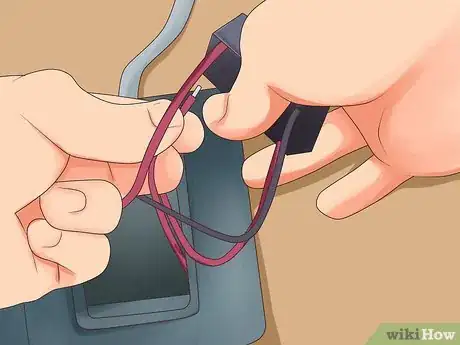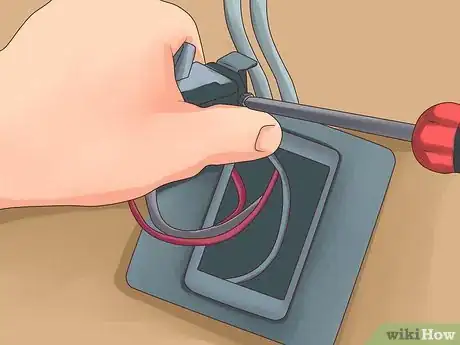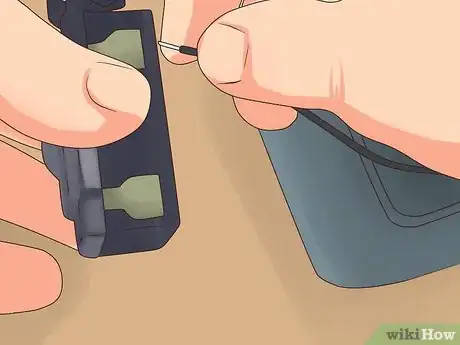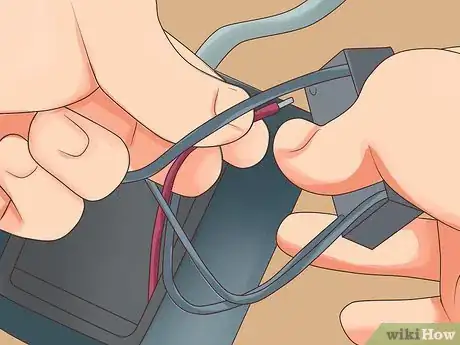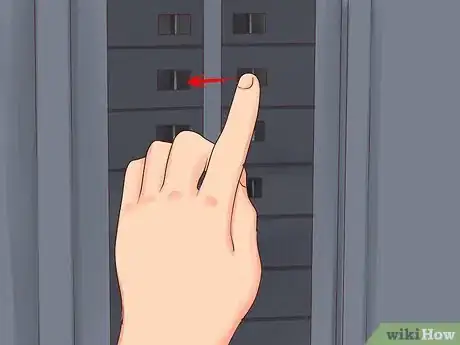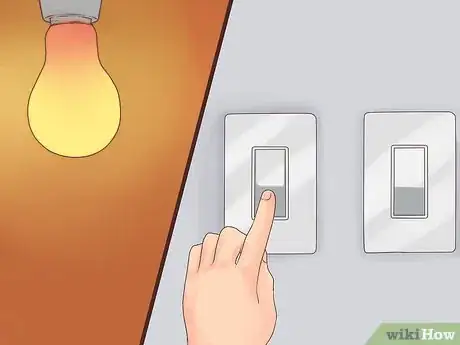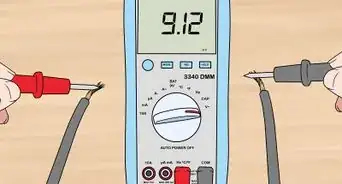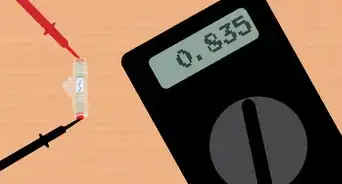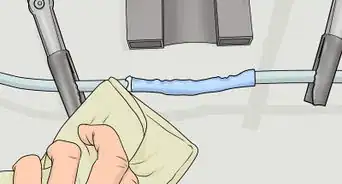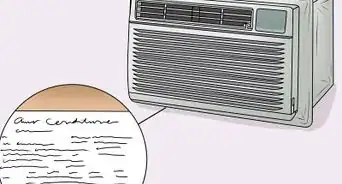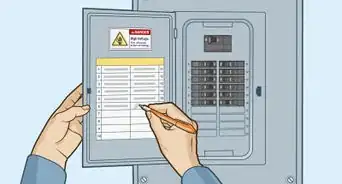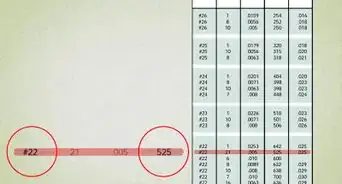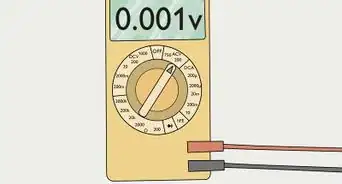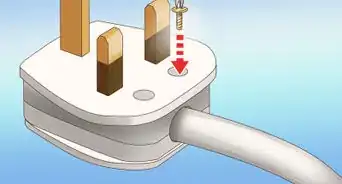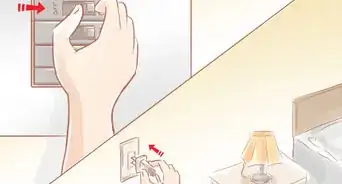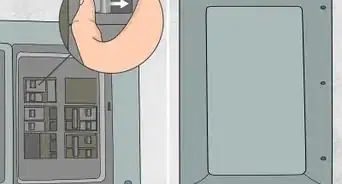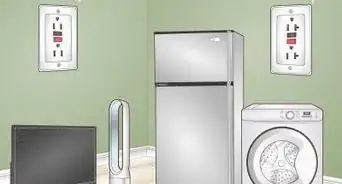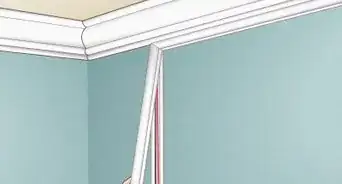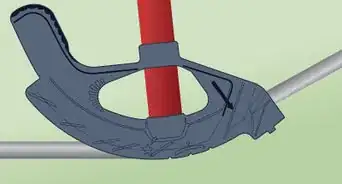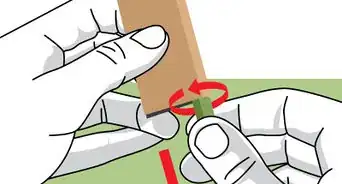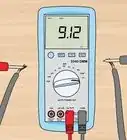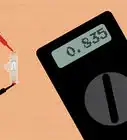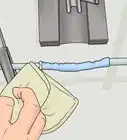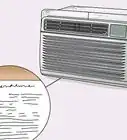This article was co-authored by Daniel Stoescu. Daniel Stoescu is a Master Electrician and the Owner and Operator of Home Tech Solutions, LLC in Hampton, Virginia. With over a decade of experience, Daniel specializes in wiring residential, commercial, and light industrial structures. The Home Tech Solutions team has over four decades of combined experience and offers comprehensive solutions for residential electrical needs.
This article has been viewed 151,862 times.
When you want to switch electrical devices (lights or other outlets) on or off from two locations, you use a pair of 3-way switches. To switch from three or more locations, you will need to add 4-way switches. For example, you may want to control a ceiling light in the basement from the top of the stairs, from the bottom of the stairs, and from a door leading to the outside. This is not as complicated as it sounds, but when working with electrical wiring, you will want to know how to wire a 4-way switch easily and safely. You may add a 4-way to two 3-ways, if they are already installed.
Steps
Starting with Safety and Understanding
-
1Turn off electric power.[1]
- Turn on the light or device being controlled by the 3-way switches, if you already have them installed.
- Locate the circuit breaker box.
- Identify the circuit breaker that controls electricity in the area where you will be working.
- Turn off that circuit breaker.
-
2Return to location you plan to wire to verify that there is no electric flow to that device.
- If the device is still lit up or working, the wrong breaker was opened.
- You may also use a current/voltage detector, to be on the safe side. (Safety Note: Be sure to test it on the live wires before you use it to confirm they are no longer live.)
- If it lights up, you did not identify the correct circuit breaker and need to return to the circuit breaker box and start over.
- If it does not light up, there is no voltage, and it is safe to proceed
- There are also inexpensive "search" devices that plug into a receptacle and generates a signal that can be detected at a specific circuit breaker, using the matching detector. When the correct breaker is off, the signal stops.
Advertisement -
3Study the 4-way switch and the manufacturer's directions.[2]
- A 4-way switch has 4 terminals or poles.
- Two terminal/poles are labeled "in," and two are labeled "out."
- Pairs of wires, called "travelers," will connect to each side.
- When the switch is operated, current will either travel straight through or crisscross. Whether "on" is up or down is determined by the positions of the other switches at that moment.
- A third conductor passing through the junction box with the 4-way switch, will not be connected to the 4-way switch. It is used for carrying the power from the far-end of the final 3-way switch back to the light/device being switched.
- There will also be a "grounding" terminal on the switch, which is connected to the bare grounding wires (or to a metallic junction box, if you have one) for additional safety.
-
4Identify the travelers. Two 3-way switches are connected to each other via "traveler" wires, only one of which is "hot" in any given switch setting combination. The 4-way switch connects in the "middle" of the two travelers.[3]
- Each 3-way switch has a "common" terminal and two traveler terminals.[4]
- Find the wires connected to the two traveler terminals.
- Some electricians use colors to identify travelers, because white may only be used for a neutral, unless it has been properly identified with another color (e.g., black, red, blue, yellow -- but NOT green).
- If you find travelers using white wires, use colored tape to mark each one in each junction box or device box where you find it, so that it will not be incorrectly viewed as a neutral wire.
- Which wires are the travelers may vary if the 3-way switches are connected to each other by way of wiring within the fixture ("fixture between") or if they are connected directly to each other and then to a fixture (known as "fixture beyond").
- Note that a branch circuit may "supply" either the fixture or any of the switches and you must first determine which junction/device box is the source for the power to be switched as well as whether the fixture is between the switches or at one end or the other.
- This article describes the configuration for feeding the fixture with power and having the 3-way and 4-way switches lined up beyond the fixture. The attached video shows a configuration in which power is fed to one 3-way switch, through the other switches, and finally to the light at the far end. The electrical theory is the same, although the selection of colors for the travelers and the switched "hot" is different.
- If a neutral wire is required at each switch location, a different configuration will be required, as shown in the video.
Wiring the Fixture
-
1Look at the wires involved. In this article, we consider the box having the lighting fixture or device as the "source" of the power from the circuit breaker.
- Two wires enter the source fixture's wire box from the circuit breaker; the black one is called "line" or "hot", and the white wire is neutral (which is grounded at the breaker box).
- Only the black/line/hot wire is going to be switched. The white/neutral connects directly to the light/device.
- Note that some jurisdictions now require a neutral wire at each switch location, due to modern changes in switching technology that may require a neutral for a complete circuit, such as "smart switches". For simplicity, this article ignores such a requirement, as these "extra" neutral wires are simply run to each location and are not being switched.
-
2Connect the black wire coming from the breaker into the fixture location to the black wire going to the first 3-way switch. This is the "supply" to the switching system.[5]
- Remove about 0.25 inches (0.635 cm) of rubber/plastic insulation from each wire.
- Use pliers to twist the exposed ends of the two black wires together.
- Complete the connection by screwing a properly sized wire nut onto the joint tightly. Lightly tug on each wire to make sure they are both tightly connected.
- Wrap the wire nut connection with electrical tape for safety and durability.
- Repeat this wire connection process at each wire connection.
- Do not nick or skin the wires anywhere other than at the ends being connected.
-
3Connect the white wire coming into the fixture/device box to the white wire on the fixture.[6]
-
4Connect the black wire coming from the fixture to a red or white wire that leads out of the box to the first 3-way switch box, and (if using white) identify the white wire with a color marking, such as red electrical tape.
- This red wire is the one that will supply power to the light after traveling through all of the switches.
- It is the installer's choice whether to use the red wire or "white" wire (identified with blue or other color) as a traveler. This description uses the red wire as the "switched" wire from the furthest switch. The video uses a different technique to "carry" the white wire, as neutral, through each junction box, all the way to the remote light.
Wiring the First 3-Way Switch
-
1Connect the black wire coming into the switch box to the "common" terminal on the first 3-way switch.
- Note that this black wire will always be "hot", regardless of the switch settings.
- Remove about 0.25 inches (0.635 cm) of rubber/plastic insulation.
- Use needle-nosed pliers to form a loop in the stripped wire.
- Complete the connection by wrapping the loop 3/4 of the way around the screw terminal and tightening the screw to hold the loop flat against the terminal. Do not overlap the wire with itself beneath the screw terminal.
- Repeat this wire connection process at each switch connection.
- If the switches have "back-wiring slots", as well as screw terminals, avoid using the back-wiring because it may be less reliable in the long run than the screw terminals.
-
2Attach the red (or red-identified white) wire coming into the switch box to the red wire going to the next switch box, and eventually all the way to the final 3-way switch.
-
3Attach the black wire and white (marked with blue) wire going out of the box to the next switch to the bottom poles of the 3-way switch.
- These two wires are the "travelers" to the 4-way switch. The third wire (the red) will not be switched at the 4-way location, but passes to the final 3-way switch.
- Note that a 3-conductor cable is often used for connecting 3-way and 4-way switches to each other, containing black, white and red conductors. The white conductors should be marked to identify their function as travelers (e.g., the white with a blue tape marking). Other installers prefer to use two-wire cables from each switch to the next, purely for the travelers, and to run the hot or switched hot a different route to and from the fixture.
- Some 3-way switches may have the "common" terminal on one side and the two "travelers" on the opposite side. Just make sure your black "hot" wire goes to the "common" terminal.
Wiring the 4-Way Switch
-
1Attach the red wire entering the 4-way switch box from the first 3-way switch box to the red wire going to the next 4-way switch.
-
2Attach the black and white/blue traveler wires entering the 4-way switch box to the "in" terminals, often the top terminals on the 4-way switch - black on the left top pole and white/blue on the right top pole.
- Some 4-way switches may have the "in" and "out" pairs opposite each other, rather than top and bottom. Look at the markings on yours and read the instructions carefully.
-
3Attach the black and white/blue traveler wires exiting the 4-way switch box to the next 4-way (or final 3-way) switch box to the "out" terminals, often the bottom terminals on the 4-way switch - black on the left bottom pole and white/blue on the right bottom pole.
- If you are adding more 4-way switches, repeat these steps with the two 3-conductor cables entering each 4-way switch location from the adjacent switches.
Wiring the Last 3-Way Switch
-
1Attach the red wire entering last 3-way switch box to the common ("com") pole of the 3-way switch.
-
2Attach the black and white/blue wires entering the box to the light colored poles at the bottom of the switch - black to the bottom left pole and white/blue to the bottom right pole.
- Not all 3-way switches are designed the same way. Just make sure the traveler wires are not connected to the common pole of the switch.
Completing the Circuit
-
1Perform final assembly of the switches and wiring into their boxes.
- Many electricians use electrical tape to make a final wrap or two around each switch to cover the screw terminals prior to installing the switches into their boxes. This is intended to reduce the risk of accidentally shorting things to the terminals.
- Double-check that all connections are proper before carefully packing the wiring and switches back into each switch box. Screw the switches into their boxes, being careful not to nick or pinch any wires.
-
2Restore electricity by turning circuit breaker back on.
-
3Test all of the switches.
- Turn the light/device on and off with one switch, then off and on with the next, then off and on with the last. If changing any switch (up or down) does not turn the light/device on or off, regardless of the settings of the others, turn off the breaker and re-check your wiring. There are 8 possible combinations, when using three switches (on and off). They should all function properly.
Community Q&A
-
QuestionHow do I connect two lights to one power source and 2 switches?
 Community AnswerThe same way you would wire one light fixture with two switches. There are many ways to wire a 3-way switch. Once you pick which one matches yours, you just replace the diagram with 2 lights instead of one light.
Community AnswerThe same way you would wire one light fixture with two switches. There are many ways to wire a 3-way switch. Once you pick which one matches yours, you just replace the diagram with 2 lights instead of one light. -
QuestionI wanted to buy a single-pole switch of a specific color. I did find a 4-way switch with the color I wanted. Is it possible to wire the four way switch to work like a single pole?
 Community AnswerYes. If you have a multimeter, use the continuity setting. Pick one of the four posts of the 4-way switch to hook up the source power. Put one lead of the multimeter on this post. Test the other posts to see which one has continuity and which does not. Leave the lead on a post that does not have continuity with your initial post. Now flip the switch. Does it have continuity now? All you have to do is use two posts of your 4-way switch that alternate continuity when you flip the switch. That's all a regular switch is doing, breaking the continuity between your source power and your load.
Community AnswerYes. If you have a multimeter, use the continuity setting. Pick one of the four posts of the 4-way switch to hook up the source power. Put one lead of the multimeter on this post. Test the other posts to see which one has continuity and which does not. Leave the lead on a post that does not have continuity with your initial post. Now flip the switch. Does it have continuity now? All you have to do is use two posts of your 4-way switch that alternate continuity when you flip the switch. That's all a regular switch is doing, breaking the continuity between your source power and your load. -
QuestionHow do I make sure my 4-way switch actually controls everything correctly?
 Upnorth HereTop AnswererAfter you restore power to the circuit, click a switch up or down to turn on the light. Click the next switch to turn off the light. Click each additional switch to make sure each switch can independently turn the light on and off.
Upnorth HereTop AnswererAfter you restore power to the circuit, click a switch up or down to turn on the light. Click the next switch to turn off the light. Click each additional switch to make sure each switch can independently turn the light on and off.
Warnings
- Stop if you see that the existing wiring is aluminum; only professionals can deal with the problems and risks in aluminum wiring.⧼thumbs_response⧽
- When working with electricity, have first aid instructions and protocols handy.⧼thumbs_response⧽
- If you are upgrading two 3-way switches, be sure to test for voltage at each switch and each switched fixture before touching anything. Make no assumptions that "the power is off" until you have proven that it is off in those specific wires.⧼thumbs_response⧽
- Avoid using any white wires for anything other than "neutral" unless you have marked both ends of it with a distinctive color (e.g., black, red, blue). Anyone later looking at your work should not be confused about an unidentified white wire being a grounded neutral as opposed to being a switched traveler that may become "hot".⧼thumbs_response⧽
- Each installation is different. Do not assume you understand the existing fixture or switch wiring unless you have studied it carefully and can document the function of each wire.⧼thumbs_response⧽
Things You'll Need
- 4-way switch or switches
- 3-way switches
- Flat head and Phillips head screwdrivers
- Plastic wire nuts
- Electric tape (black, red, blue)
- Needle-nose pliers
- Current/voltage detector
- Optional circuit-tracing devices
References
- ↑ https://www.dummies.com/home-garden/home-improvement/lighting/how-to-replace-a-light-switch/
- ↑ https://www.easy-do-it-yourself-home-improvements.com/4-way-switch-wiring-diagram.html
- ↑ https://www.easy-do-it-yourself-home-improvements.com/4-way-switch-wiring-diagram.html
- ↑ Daniel Stoescu. Master Electrician. Expert Interview. 16 August 2021.
- ↑ https://www.youtube.com/watch?v=Wknz-Beb268
- ↑ https://www.youtube.com/watch?v=Wknz-Beb268
- http://www.handymanusa.com/articles/3wayswitch.html
About This Article
To wire a 4-way switch, start by turning off the circuit breaker for the room you’re working in. Then, connect the black wire coming from the fixture to the black wire going to the first 3-way switch. Next, connect the white wire coming into the box to the white wire on the fixture. After that, connect the black wire from the fixture to a red or white wire leading out of the box to the first 3-way switch. When you’re done with all the wiring, wrap any exposed wires with electrical tape and turn the electricity back on. To learn how to integrate your new 4-way switch with your existing 3-way switches, read on!
